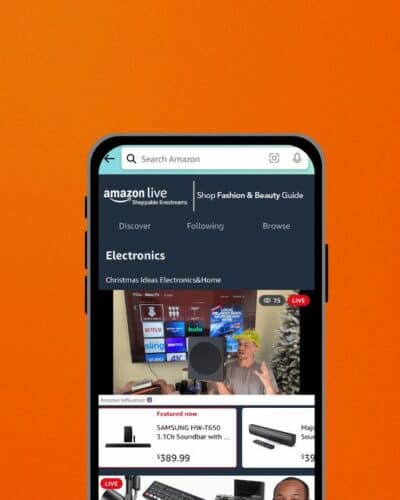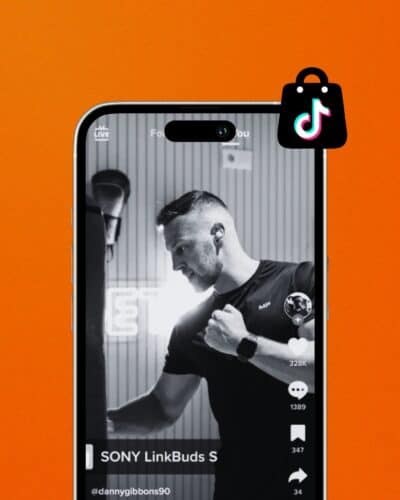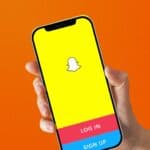For many years, YouTube has held the title of most popular video-sharing and social media platform, currently attracting 2.7 billion active users per month.
TikTok is hot on its heels though. Despite only starting in 2016, it already boasts 1.5 billion active monthly users.
While both are popular marketing channels, is one a better option for your brand?
Here we’ll break it down.

Contents
TikTok as a marketing channel (pros and cons)
YouTube as a marketing channel (pros and cons)
The future of TikTok and YouTube and what it means for brands
6 Essential questions to ask yourself when deciding whether to use TikTok or YouTube for your brand
What is TikTok?
TikTok is a short-form video app through which users can watch, upload and engage with short form videos on any topic. It encourages user creativity and interaction through features such as filters, stickers, duets, sound effects and music.
An amalgamation of Musical.ly and Douyin (the Chinese version of TikTok), the app draws most of its success from trending hashtags, trending sounds and viral challenges. In 2021, it was the world’s most downloaded app and has been downloaded 3 billion times in total.
TikTok’s powerful algorithm serves content through a user’s ‘For You Page’ based on their previous behaviour on the app. This makes it extremely personalized and engaging – a big reason for the app’s popularity.
While many people refer to TikTok as a social media app, TikTok themselves describe it as an ‘entertainment’ app. The content has evolved from mainly lip-synching and dance challenges to something way more diverse and you can now find pretty much any type of video, from informative and educational, to comedic and meme-based.
At the same time, there is still a social networking aspect through the ability to like, share and comment on videos, as well as follow brand accounts and creators.
The platform has exploded in popularity in recent years. In 2023, it crossed the 1.5 billion active monthly users mark, and on average, users spend over 1.5 hours on the platform every day.
The Audience on TikTok
TikTok is particularly popular with Gen Z and millennial audiences – nowadays, Gen Z use TikTok even more than Instagram.
However, while TikTok is generally associated with 16-25 year olds, as the platform has grown, it’s increasingly attracted a more mature audience. In fact, worldwide almost 31% of TikTok’s users are now aged 25-34, 16% are aged 35-44, and a surprising 15% are over 45.
In terms of gender split, male and female breakdown remains fairly even (54% female, 46% male).
What is YouTube?
YouTube is a video-sharing service where users can watch, like, share, comment and upload their own videos. Originally created in 2005, it is now one of the most popular sites on the internet, with an average of 694,000 hours of YouTube video streamed every minute (even more than Netflix).
Today, YouTube leverages creators, individuals or groups who create content for viewers who subscribe to their channel. Billions of people tune into their favourite YouTube creators on a daily basis to watch and engage with their content.
Generally, YouTube was known for longer form video content of 10-30 minutes, however, after the overwhelming success of TikTok, YouTube introduced YouTube Shorts in 2020. Now creators are able to upload 60s maximum vertical or square videos (similar to Instagram Reels and TikToks). According to YouTube, Shorts are now attracting over 2 billion active monthly users, overtaking TikTok’s 1.5 billion.
The Audience on YouTube
YouTube has a slightly older demographic of users than TikTok, with 21% falling in the millennial age bracket (25-34), and 17.5% of YouTube users aged 35-44, meaning that one out of every three YouTube users are are between the ages of 25 and 44.
Compared to TikTok, the audience skews the other way in terms of gender split, with 54% of users being male and 45% being female.

TikTok vs. YouTube: Which is better for brands?
TikTok
What are the benefits of TikTok marketing for brands (compared to YouTube)?
If you’re a brand actively trying to engage a Gen Z audience, TikTok is a great place to be, with 60% of users falling in this age group.
We know that these younger generations are increasingly hard to reach via traditional media channels like TV and radio, and Gen Z are becoming a key target audience for many brands (The Millennial Generation makes up the largest generational proportion in the US).
The TikTok For You page and algorithm also makes it easier for videos to rack up thousands or even millions of views, without an existing big following/subscriber base behind it. Anyone can go viral with the right video, and the right content, and for brands, it’s a lot easier to jump on an emerging trend quickly (as long as you’re monitoring the platform constantly).
Finally, TikTok tends to see less polished, shorter video content, making the production timelines and costs for brands and creators lower on average.
What are the disadvantages of TikTok marketing for brands (compared to YouTube)?
Whilst a young audience is in high demand, it’s also worth noting that Gen Zers are likely to have less disposable income than boomers (who are less likely to be on the platform).
Also, the concept that ‘anyone can go viral’ on Tiktok can have its downsides. Yes, it’s great that there’s almost a level playing field for any creators, but it also makes a strategy inconsistent. How many times have marketers thought they had a great TikTok on their hands only for it to plateau at 200 views?
Finally, the nature of the content that’s popular on YouTube makes it harder for some brands to be relevant. If you’re a luxury or legacy brand, for example, you may have strict brand guidelines and a highly aesthetic ‘luxury’ brand identity. It’s challenging to pair this with the comedy-style content that we see a lot of (although some brands as detailed later in the article are nailing both).
Influencer Marketing on TikTok Pros & Cons
Due to the TikTok For You feed and algorithm, creators can achieve huge global reach outside of just their own followers, meaning your content has the potential to go viral. At Goat, we also repurpose the best performing organic and influencer content as paid ads, meaning they show up in people’s For You feed in a really natural and non-invasive way.
As the platform has been around for longer, creators tend to be cheaper to work with. The highest paid YouTuber last year, Mr Beast, earned $82million from his channel, a lot compared to the highest paid TikToker, Charli D’Amelio at $23million. As content is shorter in general as well, fees tend to be lower and timings quicker, meaning you can quickly get a reactive piece of influencer content out.
On the cons side, because TikTok users often consume so many videos in one sitting (as they’re shorter in length), it could be easier for influencer content to get lost in the noise. It’s also harder to get your brand message across in a short space of time vs on YouTube where you have a lot longer to integrate it.
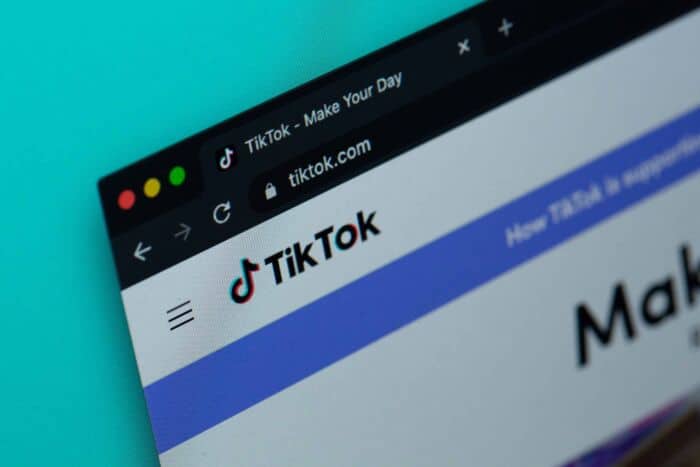
Two brands that are killing it on TikTok
Porsche = 3 million followers

Despite being a luxury vehicle brand, Porsche has fully embraced the chaos and humour of TikTok and have racked up nearly 3 million fans.
Reasons for success:
- They embrace humour. Porsche have never shied away from creating funny, self-deprecating content that really resonates with TikTok’s audience. They even did a “Turning Porsche’s negative TikTok comments into a rap” series.
- Working with influencers. As in the video above, Porsche have partnered with relevant influencers to create content around their cars. These range from humour/comedy-based videos to action-based videos showing the speed and power of their cars.
Gucci = 4.4 million followers
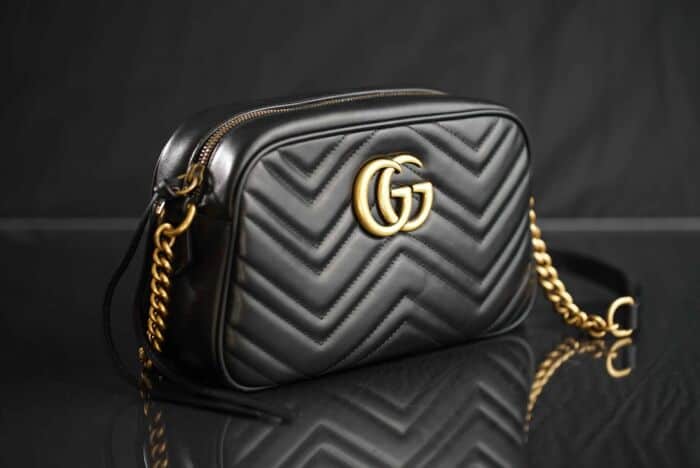
Similar to Porsche, Gucci is a luxury brand – and these have historically struggled to act fast with TikTok, probably out of hesitancy around brand guidelines (luxury fashion brands have always been very filtered and edited in their advertising).
Reasons for success:
- UGC: Gucci regularly shares follower or influencer content to their own feed.
- Challenge-based content: In 2020, Morgan Preslet invented what has become known as the #GucciModelChallenge, layering mismatched clothing to mimic the styles seen on Gucci runways. Rather than reject the challenge for slightly poking fun at the brand, Gucci embraced it – reposting their favourite videos and encouraging more people to take part.
- Behind the brand: One of the things that people love about TikTok is how it’s made brands more accessible. Rather than just seeing the polished finished project, we now see a lot of “behind the scenes” style content. Gucci has also embraced this, showing videos in the lead-up to fashion weeks, or backstage at runway shows and photo shoots. This really helps to drive more of a connection between the brand and its community.
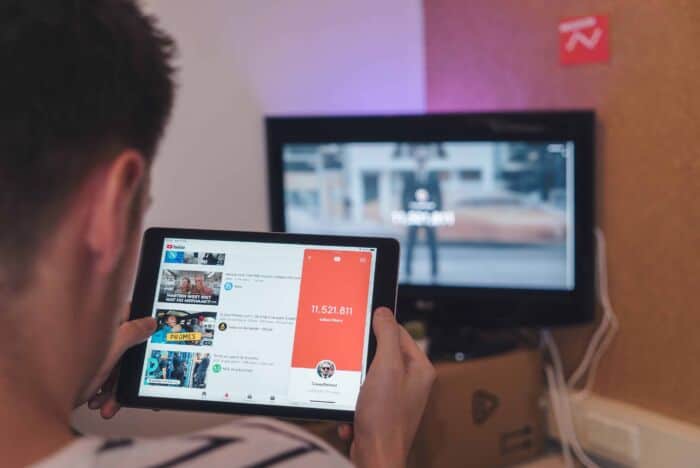
YouTube
What are the benefits of YouTube marketing for brands (compared to TikTok)?
YouTube leans towards longer-form content which opens up more opportunities for brands in terms of the types of content they create.
It’s easier to integrate storytelling and more complicated/informative messaging when you have a ten-minute video vs a 60-second video. For example, if a brand has partnered with a beauty influencer to promote a new skincare line, they can centre a whole 20-minute video around this line, integrating it with popular content formats like vlogs or tutorials. There’s just more space to get multiple messages across whereas with TikTok you have to be very to the point.
Another benefit is that brands have more freedom to create high-production content. On TikTok, users tend to prefer less polished, filtered content which is great for some brands. But if you want to showcase a more slick, stylistic type of content, YouTube feels more native.
The content also doesn’t die. TikTok tends to have a very short shelf life with trends and TikToks losing popularity within a week. YouTube, on the other hand, still serves up videos from a long time ago and makes them searchable. A well-performing video could feasibly still be getting traction a year later.
What are the disadvantages of YouTube marketing for brands (compared to TikTok)?
YouTube videos, in many ways, are less discoverable than on TikTok. Yes, it’s great for search engine optimization, but rankings are very competitive. People are also more likely to head to the platform to check out their favourite accounts, whereas TikTok serves up content on the For You page based on the algorithm.
This isn’t necessarily a downside; it just means it’s even more important for brands to partner with the right creators to make sure they’re reaching their audience on YouTube.
And while in the above section, we mentioned that you have the freedom to make more high production video content, this could also be seen as a disadvantage. It is more time consuming to create longer, higher quality videos so brands and influencers tend to create less quantity.
Finally, the reason TikTok has performed so well is that it’s generally agreed that people have increasingly shorter attention spans. In fact, a 2022 study found that 49% of people said they feel their attention span is shorter than it used to be and 51% said they believe technology is ruining young people’s attention. Short form video has been King for the past couple of years and we’re yet to see whether this will swing back the other way. YouTube has introduced Shorts to compete with this trend though.
Influencer Marketing on YouTube – Pros & Cons
YouTube is generally seen as more creator-centric than TikTok. While it’s hard for creators to make revenue from views on TikTok, a YouTube creator can expect to make between $2,000 – $3,000 from 1 million views on a YouTube video. This makes the platform more attractive to creators and may mean some of the biggest creators focus their time on YouTube vs TikTok.
Influencers on YouTube also have flexibility with video length – they can create longer 20 minute videos or 60 second YouTube Shorts, depending on what they think will work. For example, two of the most popular types of content we see are ‘Vlog’ or ‘Day in the Life’ videos, and ‘Get Ready With Me’ videos. In these, the influencer can seamlessly integrate the product or brand into the existing content within a longer video, and deliver more messages and information within it.
The content also brings long term value, spiking in the first week or two of launch and then remaining searchable, generating traffic to your website for a long time.
The con of influencer marketing on YouTube is generally price and frequency. Creators on the platform tend to charge higher fees as the platform is more established. If it’s a longer form video they also will likely need more time to produce it making reactive content more difficult to achieve.
Two brands that are killing it on YouTube
LEGO = 17.4 million subscribers

LEGO have created a YouTube channel that appeals to both their target audiences (children and adults). This way they’re able to capture the attention of the children (and adults) that want to play with LEGO, and the adults that are buying it for their kids.
Reasons why it’s successful:
- They leverage user-generated content, publishing videos created by their fans which drives engagement and brand connection.
- They work with macro and micro influencers. From the likes of Alicia Keys and Thierry Henry, to Peggy Gou and Ottolenghi, they’ve welcomed known faces on the channel to co-create content, attracting more fans and views.
- They have regular series such as their LEGO Gaming and LEGO Building, making it easy to find the content you want.
- Episodic content: They’ve even created original series such as LEGO Friends: The Next Chapter.
- They are utilizing Shorts to capture new audiences and drive them to their longer form content.
The Goat Agency = 5,760 subscribers

Yes we had to put ourselves in the mix! And while we can’t boast the millions of followers that LEGO has, we are one of the leading agencies in our industry on YouTube.
Reasons for the success:
- Regular vlogs. Goat was the first agency to launch a daily vlog, tracking the Founders’ and the wider business’ journey to becoming a leading social and influencer marketing agency. These casual vlogs captured the attention of our audiences and by ensuring consistency (posting daily for over a year), our audience always knew what to expect and when to come back.
- Influential guests. Similar to LEGO, we leveraged our contacts to get influential people from our industry in our content. These included CEOs, influencers and marketers.
- Search-based content. We know that people in our industry are regularly searching for content like ‘how to run paid ads on TikTok’ or ‘what does ChatGPT mean for marketers?’ so we’ve ensured to create videos around these keywords, tagging them so that they’re more likely to show up in people’s feeds.

The Future of YouTube and TikTok and what it means for brands
Over the next few years, we expect to see the competition heat up between YouTube and TikTok as YouTube Shorts takes on TikTok, and TikTok starts to introduce longer form videos to compete with YouTube.
Both platforms are also going to be pushing live streaming, advertising and ecommerce solutions to make them more attractive to brands.
In terms of how brands approach their YouTube and TikTok strategy, we can expect:
- Prioritizing search engine optimization. As TikTok becomes more popular as a search engine, we expect to see brands integrating search into their strategy.
- Both YouTube and TikTok are working to improve their reporting and analytics. For example, YouTube recently introduced two new metrics for Shorts; shown in feed and viewed vs swiped, to help brands understand how users are interacting with their Shorts content. As budgets tighten in the face of a potential recession, it will be more important than ever for social media platforms to give brand teams the data they need to prove their marketing effectiveness.
- A push towards social commerce. TikTok recently introduced TikTok Shopping, partnering with Shopify to integrate this on the platform. With more and more people heading to social media to buy items, we expect it will become easier for people to buy within the platform itself.
- Creator relationships. Currently YouTube is still seen as a better revenue platform for creators. Previously you couldn’t make revenue from Shorts in the traditional sense but this changed in 2023. In order to retain and attract more creators, TikTok will need to boost its revenue capabilities and they’ve announced their TikTok Creator Fund will increase to $1 billion in 2023. While this is great, the traditional revenue model of Shorts may draw more creators to the platform and away from TikTok, making it less attractive to brands.
6 Essential questions to ask yourself when considering whether TikTok or YouTube is better for your brand
So we have run down the potential benefits and disadvantages for brands deciding between TikTok and YouTube, but this might seem like a lot to take in at once. To make the decision easier, we wanted to summarize this into 6 core questions to try and make the decision a little easier.
- What is the product or service you’re trying to sell? Is it something that requires quite a lot of consideration and information, in which case longer form content on YouTube might be better, or is it more of a snap decision purchase?
- Who is your target audience? Does it skew younger (TikTok), older (YouTube), male (YouTube), female (TikTok)?
- What is your brand identity and tone of voice? Are you at a place where you’re able to embrace more ‘slapdash’ TikTok content or do you want to stick to high production?
- What kind of resources do you have as a team? Do you have the ability to create longer form content for YouTube or is faster easier content on TikTok more in your remit?
- Have you researched the influencers you want to work with? Where do they get the most engagement?
- What are your KPIs? Do you want reach, engagement, conversions?
Concluding thoughts
Which is better for brands; TikTok or YouTube?
As we’ve shown throughout the article, there really is no one size fits all. It completely depends on your brand’s objectives, target audience and the product/service you offer.
If you’re a brand that’s focused on a younger Gen Z audience, TikTok is probably the way to go.
However, if you’re a brand marketed towards millennials and boomers, YouTube is preferable.
Similarly, TikTok is great for brands that want to trial, test and learn as you can create content quickly and easily and see what sticks. YouTube on the other hand may take longer to build an audience and you need to invest in higher production and longer form video content.
Ultimately there is no right or wrong approach – the key is to ensure you’re creating content that’s native to the platform, partnering with the right creators to increase reach, and making your content as discoverable as possible.
Want to explore your brand’s YouTube or TikTok marketing strategy? Goat has partnered with global brands such as Dell, Nike, The Body Shop and Deep Silver on their influencer and social media activations. Contact us to find out more about our services.
You can also follow our Goat Newsletter for three interesting stories from the world of social media and influencer marketing each week.
TikTok vs YouTube FAQs:
Is YouTube or TikTok more popular?
Currently, YouTube has more users, but more Gen Zers use TikTok.
Is it easier for a business to start on TikTok or YouTube?
TikTok is shorter form videos and tends to be lower production costs, so for brands on a budget it may be the better option to start with. You can then use the learnings from TikTok to inform your YouTube strategy.
Which Platform is Bigger TikTok or YouTube?
TikTok has more than 1.5 billion users per month, while YouTube has over 2.7 billion.
